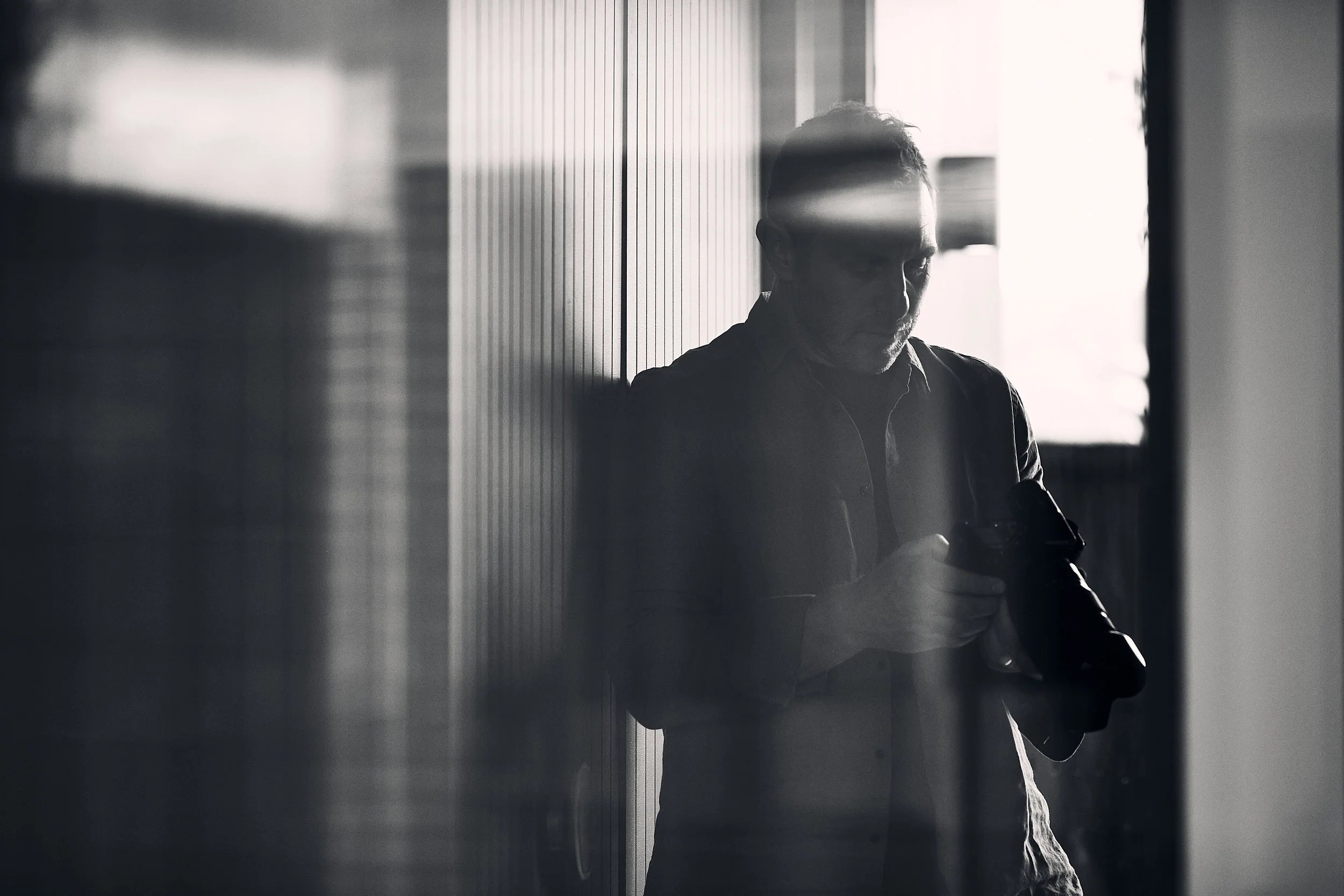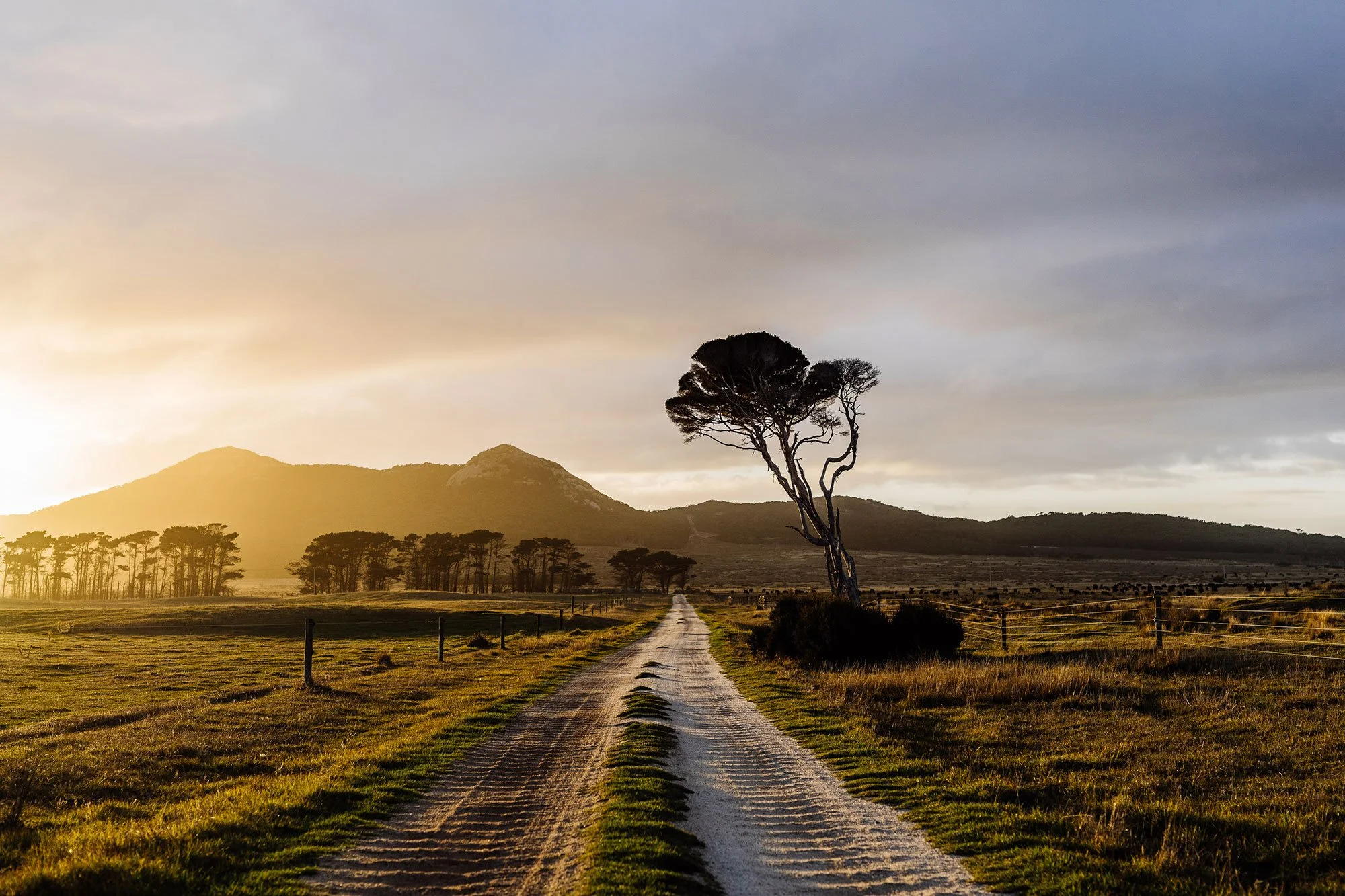Q&A: Adam Gibson
Despite a career that takes him to some of the most exotic destinations on earth, there’s no place like home for this born-and-bred Tasmanian photographer.
▼
Adam Gibson
You grew up in Lauderdale, just out of Nipaluna/Hobart. What was your childhood like?
When I look back on my childhood, I see most of it in the ocean. My mum and dad grew up surfing and diving, and my brother I were just very lucky passengers in their lives - we’d surf right out the front of our house some days, or ride our bikes into Marion Beach and sit in the sand dunes for hours while dad windsurfed. We spent our days in nature. It was a super simple life, and I try to recreate those moments for my own kids now.
These days, you’re a well-known photographer with high-profile clients all over the world. What got you into this line of work?
I studied photography at Rosny College, and the first assignment was to make a pinhole camera with a Milo can. Seeing that first image appear in front of my eyes was my introduction to the magic and alchemy of photography, and I was hooked.
I went on to study at the (now) School of Creative Arts & Media on Hunter Street, majoring in Graphic Design with a minor in Photography. In those days, it didn’t feel commercially realistic to pursue photography as a career. I worked as a graphic designer in Hobart for a while, before I was offered an opportunity to work in a studio in Melbourne. I’ll never forget my dad crying when I told him that I was moving to the mainland - it was a really big moment for my family.
I ended up starting a studio with two friends, and lived in Melbourne for 10 years. Near the end of that time, I started picking up the camera a bit more, shooting some images for some of our clients when they couldn’t justify the expense of a commercial photographer. Slowly and subconsiosly, I began to build up the confidence that I could actually do this photography thing.
When I moved back to Tassie in 2014, an architect - Daniel Lane from Preston Lane - asked if I wanted to shoot a house for them. I had worked on their branding while I was in Melbourne, and I always attribute a bit of a lucky break to that. The standard for those sorts of shots is so much higher today than it was then, but they liked the images at the time, and it all really happened from there.
When I was at art school, the head of photography David Stephenson told me that I should be a photographer. I forgot about that until others started to tell me that I had an eye for it, and it’s really powerful now to reflect that he - a world-renowned photographic artist - saw something in me back then.
Clockwise from top L: Hampden Road House for Archier, Pop Top House for Licht Architecture, Green House for Bence Mulcahy, Casa Acton for Archier (images: Adam Gibson)
You’ve maintained a keen interest in architecture photography. What is it about the built environment that interests you?
My dad was a draftsman, and became a civil engineer by the end of his career. I used to go into his office and dream up houses and do these technical isometric drawings.
But, ultimately, I’m an image maker, and there’s just something intuitive about how I approach photographing spaces. When I shoot a house for an architect, I’ll use a tripod to get the more predictable shots that you expect when documenting a space. But then I’ll run around with a handheld camera, and shoot through a window or an object, to capture those more tactile moments. They have a different feeling and carry more weight. When you pair those two kinds of images of together, that’s where things become interesting.
What is one of your stand-out career highlights?
I photographed a resort in the Caribbean a few years ago. It was one of the most far-flung, exotic places I had ever been, and I remember getting on the plane and thinking to myself, “What is a kid from Tassie doing, being flown to the other side of the world to take photos?!” It can be nerve-wracking doing these sorts of jobs, but I try to pat myself on the back a bit, and just take a moment to feel really grateful.
You’ve travelled the world for your work, but you keep coming home to Tasmania. What do you love most about living at the bottom of the world?
Tasmania is one of the most soulful places I’ve ever been, in terms of the way people live in parallel and unison with the landscape, the ocean, and each other. I refer to it as ‘island mentality’ - it’s a really great positive trait when we’re not necessarily understood properly by those outside of it.
There’s a special quality about Tasmanian people. They’re calm, genuine and wholesome. There’s a really safe and nurturing spirit here. The world is so busy, and the more I travel, the more I crave coming home to a place where my mind and body can settle. I can breathe again when I’m home.
Flinders Island for The Flinders Wharf (images: Adam Gibson)
What must every visitor to Lutruwita/Tasmania experience while they’re here?
Take a hike. I often recommend people avoid the usual Russell Falls and Cradle Mountain walks, and instead do the Hartz Peak walk for amazing country and beautiful views out to the south-west. And visit Bicheno for crystal clear water, a great beachside vibe, and the chance to catch abalone on the snorkel. The cray rolls at the Gulch are super tasty, too.
Where are your favourite places to eat and drink around Hobart?
Ranita Ramen Bar - I love the fact that you can get a world-class bowl of ramen in such an amazingly humble place as Hobart.
Trophy Room - a favourite Friday lunch spot that still serves Cascade Lager.
Six Russell Bakes + Bistro for coffee - Brian is the man!
Luke Burgess’ latest venture, Scholé - refined, pure produce, in a beautiful tiny room!
▼









